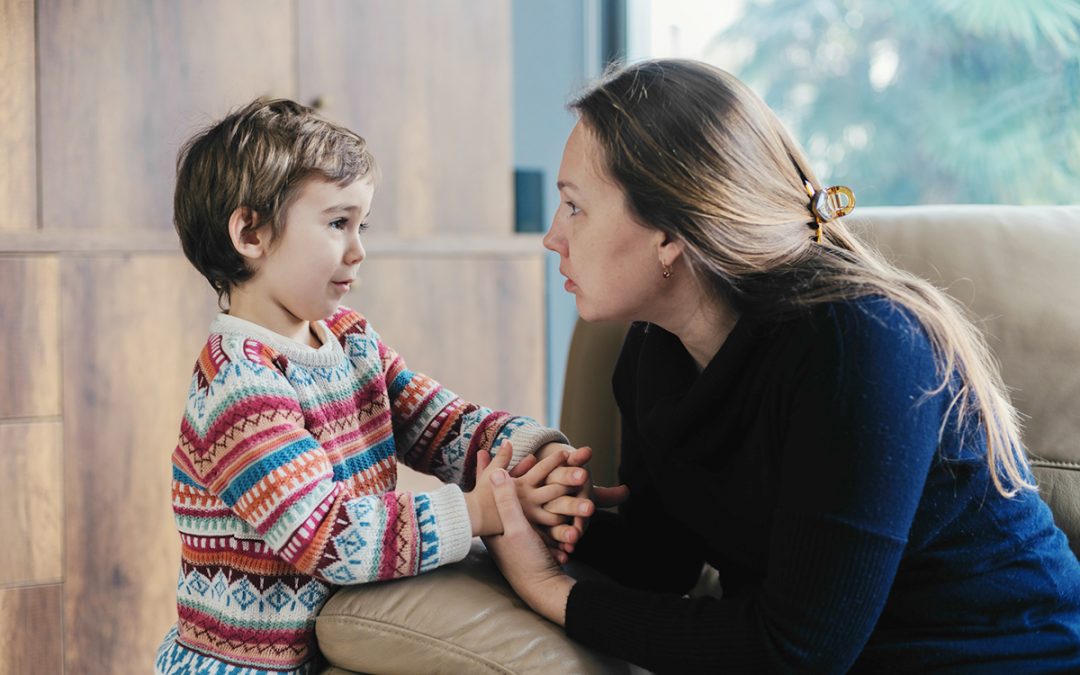
by Joanne Wallace | Feb 8, 2024 | Child Development 0-5yrs
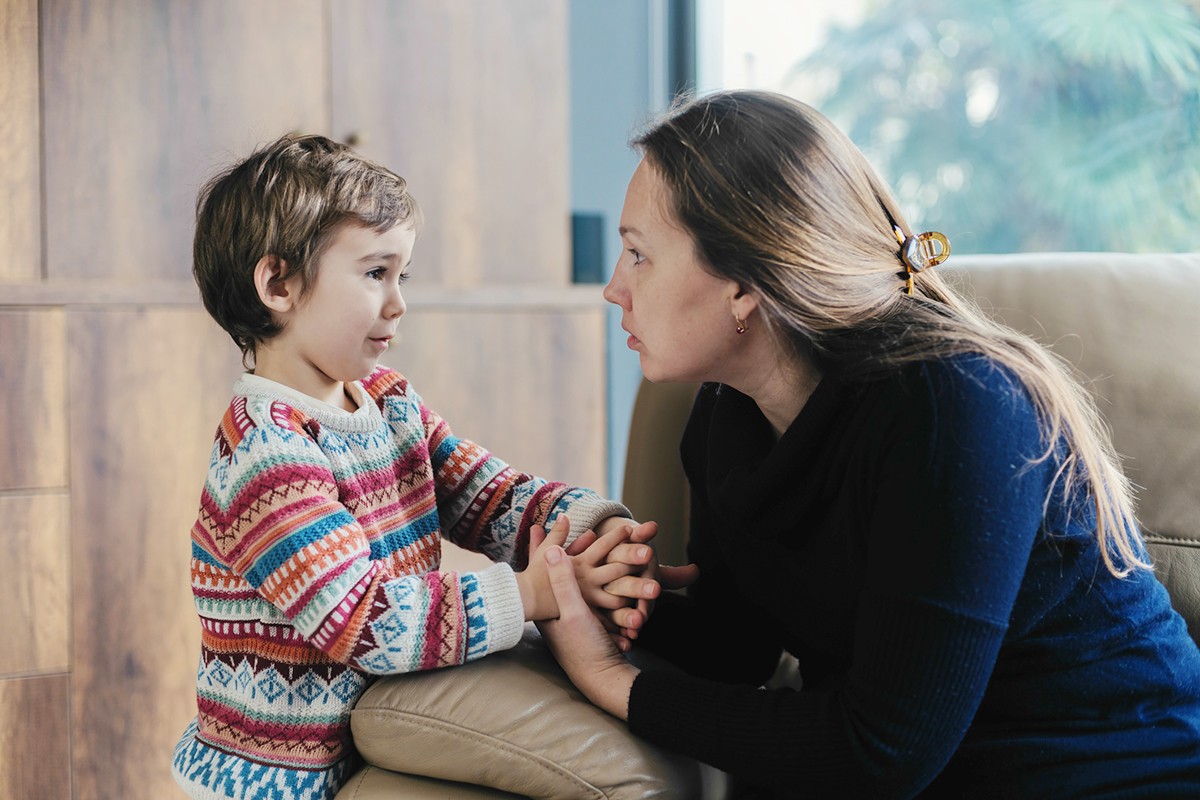
“No” is arguably the most powerful and important word we ever learn. As adults, if our “no” is not given or taken well, it deeply affects our emotional wellbeing and social success.
Adults with poor boundaries find it hard to say no to themselves and others. This can sometimes result in becoming unreliable at work and in the home, addictions, becoming a passive victim and even violence.
It is helpful to frame how we teach no by looking at how we respond as adults in a healthy way.
Healthy adults will immediately stop when someone says no.
– When we say no to our children, make sure they stop. While they are very little, gently restraining them without becoming angry, teaches them to respond immediately to “no”. Once your child is 2 or 3, it becomes harder to do this gracefully, but if we don’t, it is next to impossible when they are 8 or 15.
When we say no, we need to show them what it looks like to accept a “no” Show them “no” by removing the object, moving the child away or sometimes leaving (yes even halfway through your weekly shop)
Healthy adults pursue something else.
Staying and repeating “no” while a child keeps repeating the behaviour teaches them that “no” means you will give them your attention. If they are looking for connection, they will begin to look for more ways of making you say “no!”
Giving in after saying “no” teaches your child that “no” really means “maybe.” This can affect your childs’ ability to follow safety directions, say “no” to themselves to control impulses to spend, eat or medicate. It can even affect their ability to hear “no” from their friends or adult partner.
Distraction is King. As healthy adults, if we don’t get the job we applied for, we don’t camp out at the workplace badgering the boss with pleas to employ us. Instead, we look for another interesting opportunity. To teach this strategy to your child, after saying “no”, offer something else. For example, you might say “no” to throwing an object, but might find a ball to roll down a slope instead.
Sometimes adults feel guilty when they say “no” especially if their parent was authoritarian and “no” felt like a rejection. While it is important to not repeat this error, it is also important not to compensate your child every time you say “no.” If they learn you will give them a treat or special attention after saying “no”, they will look for more ways of making you say “no!”
Healthy adults are not afraid to say no.
As much as possible, honour your childs’ “no.” Read Babys’ body language and stop anything that upsets them. Immediately stop tickling, wrestling, or spinning when asked. Model this by telling them to stop when you are not enjoying their rough play too.
Respect their right to say “no” to affection. Never force them to accept hugs or kisses from other adults. This teaches them they must accept unwanted touch. Give toddlers the power to choose by giving them 2 choices of activity, outfit, or toy. Limited choices still teach personal power, including “you can put it away or I can put it away.”
Even if your child screams or physically asserts their “no”, don’t meet their anger with anger. Ask them to say “no” in a way that can be heard without scaring other people. Take time to teach them socially acceptable phrases or gestures to say “no.” With pre-schoolers you can roleplay how to say.
We can’t always accept “no” from our babies and children because their brain doesn’t yet have the capacity to always know what is good for them. For example, changing nappies, eating good food, going to sleep, being safe and wearing weather appropriate clothes are choices adults need to make.When we can’t honour their “no”, a good rule is to slow down, repeat yourself, and be gentle. Getting angry and forcing your own “no” will teach a child that their feelings are not important. It will also teach them to use anger and force to say “no”. For example, at bedtime, gently repeatedly returning them to bed, without engaging except to say “it’s time for bed” will teach them you mean your “no.”
Healthy adults question why.
“That hurts”, “that’s not safe”, “that will break,” “you will fall,” “that’s mine” are all short explanations that help your child accept “no.” From the youngest age, no should be given an explanation. These expand as your child gets older.
Preschoolers and school aged children should be allowed to negotiate when appropriate. For example, we might say “no” to waterplay in the lounge room. Your child might suggest taking it to the bathroom. You might say yes. You may say no to using makeup but yes to putting some on them yourself. Be open to reasonable negotiation so your child learns this important life skill.

by Joanne Wallace | Apr 6, 2022 | Child Development 0-5yrs
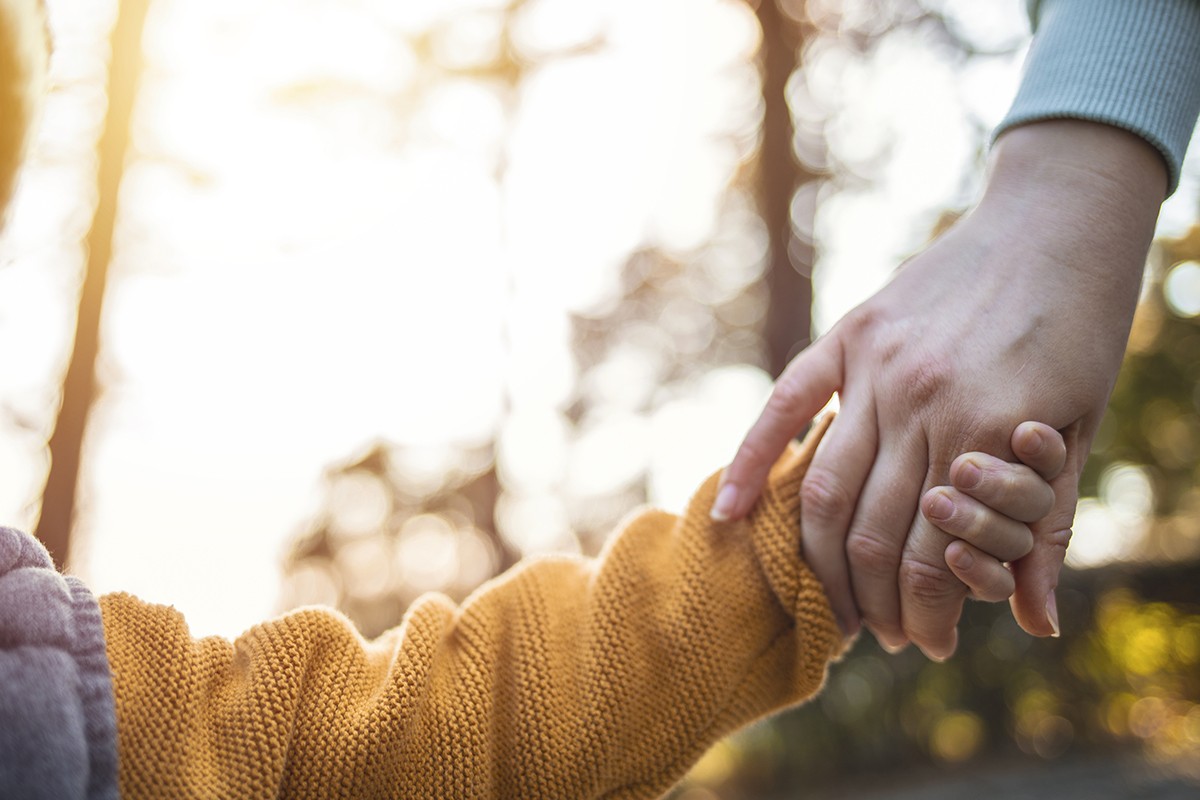
Bringing your pre-school child to drop off classes, sending your 3-year-old with a carer, or grandparent, or even just coming to classes where your child leaves you behind, swept up in the magic of the class, are all bittersweet experiences. But even the most independent child can balk at the gate, leaving us feeling unsure, concerned or even guilty for pushing our chick out of the nest. At Hive, we have watched this inevitable internal conflict play out for many parents.
This gentle push is a very important step towards skill of independence so essential for success at big school. Children that can’t self-sooth without adult assistance may find big school quite a lonely and challenging place. The anxiety that comes from that, then makes learning difficult and can have an impact on their self-esteem.
This middle ground of more independent or drop off classes at Hive are a great way to develop self-assurance and independence to prepare them for big school. Building this confidence is evidence they are so sure of your love that they have “internalised it”. They literally carry it with them and draw from it when they need to, knowing you will be there at the end of the day.
Here are some beautiful and thoughtful ways we have seen parents use to symbolise carrying your love with them into these new places and spaces so they can do so without building anxiety.

A young mother talking to her sad toddler son inside in a bedroom.
1. Prepare them by talking about what will happen without introducing the idea that they “may not be ok”. This is called “projected identity” and we do this either positively or negatively. In fact, this can become a speech habit for some parents. Whoever we say our children are, generally they will be. So, tell them “You are so grown up, you will go straight into class and pop your bag away.” “You always make friends.” “You are such a good listener” (even if they are not) “You can be the teachers’ helper you are so clever”
Avoid talking to other adults about your fears when your child is listening. They take in more than we think!
2. Try not to bringing treats, sleep or comfort toys that are bulky and will distract them from joining in class. If they are leaving them at home, do this at your house, not at the classroom door.
3. Make sure they get practice at home opening their bag, opening their lunch box, and going to the toilet without help. Send them in easy to put on shoes. Send them with food they like. This all creates a sense of independence for them too. They don’t need their parent to complete these tasks anymore.
4. Encouraging them to put themselves to sleep at night at home, means they already have an ability to self-sooth in a familiar environment. If they struggle with this, they are likely to struggle to recover when upset in an unfamiliar environment. This one can be difficult but persistence is key. Just be patient.
5. Give them a “touch stone” something they can physically touch, that connects them with you. A key or necklace that they are looking after, and they you will come back for. Make sure neither is too valuable. Or draw a little love heart on your wrist and theirs where you feel the pulse. If they miss you, they can touch it and “feel your heart beating”. Alternatively, Spray their wrist with your perfume or after shave so they can smell you.
6. Externalise. If your child tells you, without prompting, that they are worried about starting classes, write what they are worried about on a piece of paper. Put it in your pocket and tell them you will look after their worries for the day.
At Hive, our classes are directed activities so unsettled children are quickly engaged. We always contact you if your child is unable to settle for the day and work with you to develop strategies.
Our school readiness classes also teach identifying and expressing basic emotions appropriately as well as social skills to work cooperatively.
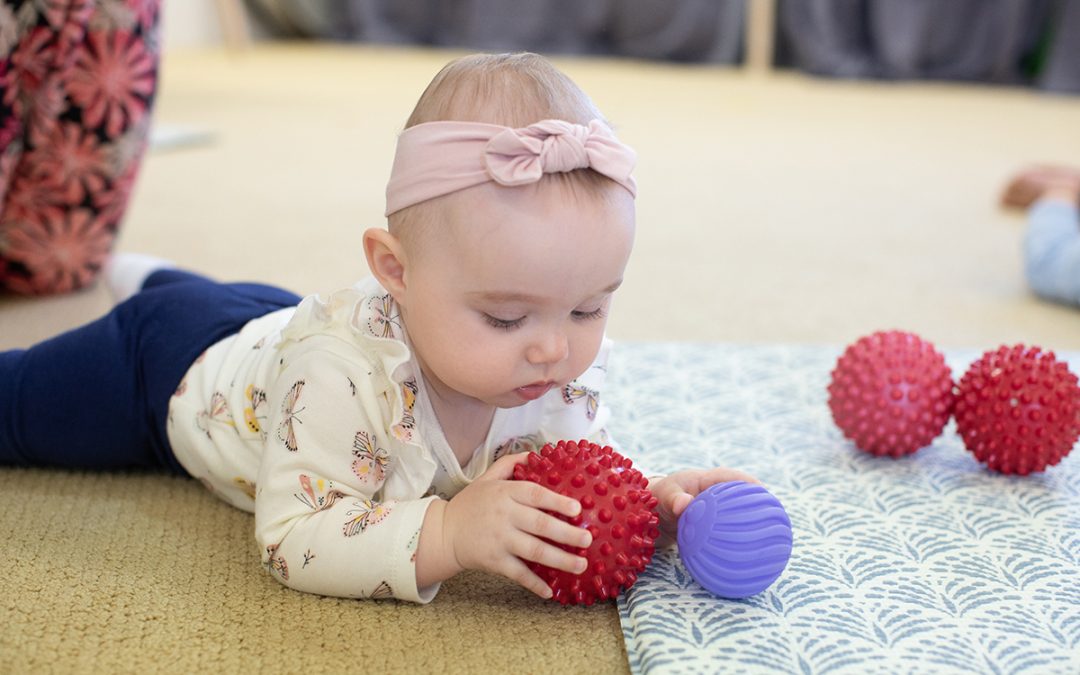
by Joanne Wallace | Mar 10, 2022 | Child Development 0-5yrs
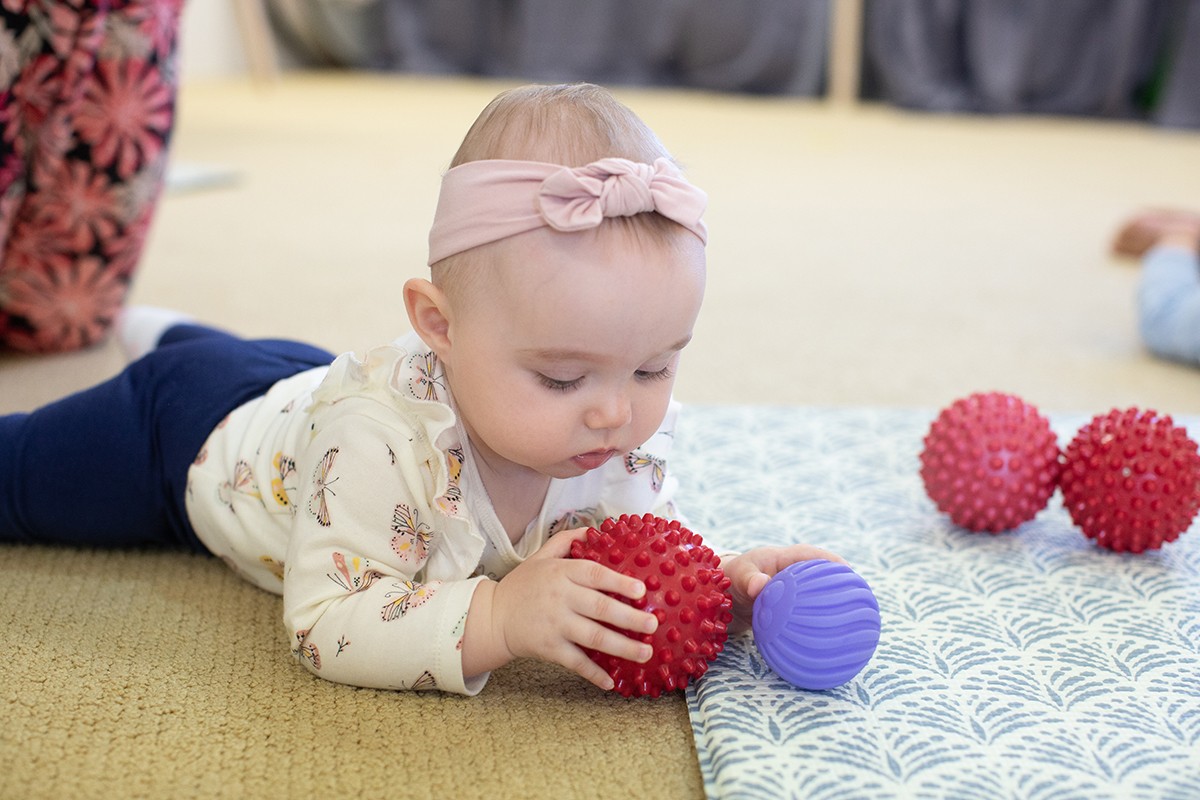
It seems like every time you turn around some well-meaning person pushes us to get bub on their tummy. Why is this so important? And what if your bub HATES being on their tummy?
Under 6 months, our brain first develops all the involuntary or automatic movements that make all other movement possible. The Hind (or base part) of your brain, is responsible for movement we don’t think about, including breathing. These include things like following an object with our eyes, turning our head to locate a sound, using our core muscles (tummy and back muscles) to tighten so we can reach for objects as well as using one arm/leg to hold ourselves still (anchor) so the other can reach or extend to crawl.
Why does it matter if these movements aren’t automatic?
If we need to THINK about doing these things, our brain isn’t free to LEARN about the information that action is giving us. For example, if we need to THINK about how to make our eyes track a line of writing, our brain isn’t free to LEARN what we are reading. If we need to THINK about following a teachers’ movement around the room, our brain isn’t free to LEARN what they are saying. The good news is, once we are aware of how important involuntary movements are, you are empowered to easily support your childs’ future development.
THE PLAN:
Firstly, put baby down.
Our culture takes bub from bed to bouncer to highchair to car seat to pram and back to bed again. Our core muscle strength develops through unsupported floor play. So, give your child plenty of uninterrupted time alone, on the floor. Add a few interesting objects and mat textures to lengthen floor play.
The big bonus for introducing independent floor play early is this will feel normal to your older baby who will give you a much-needed break by entertaining themselves for longer periods.
LET’S GET THINGS IN ORDER
There is an optimal order to your babys’ physical development. Each skill allows your bub to succeed at the next. This means missing out steps in the order of physical development can make things trickier later in the game. If your baby hates tummy time, fusses or flails their arms like an earthbound superman, it may simply mean they have missed back time.Back time comes BEFORE tummy time. Spending time on their back strengthens the muscles in the front of babys’ body.
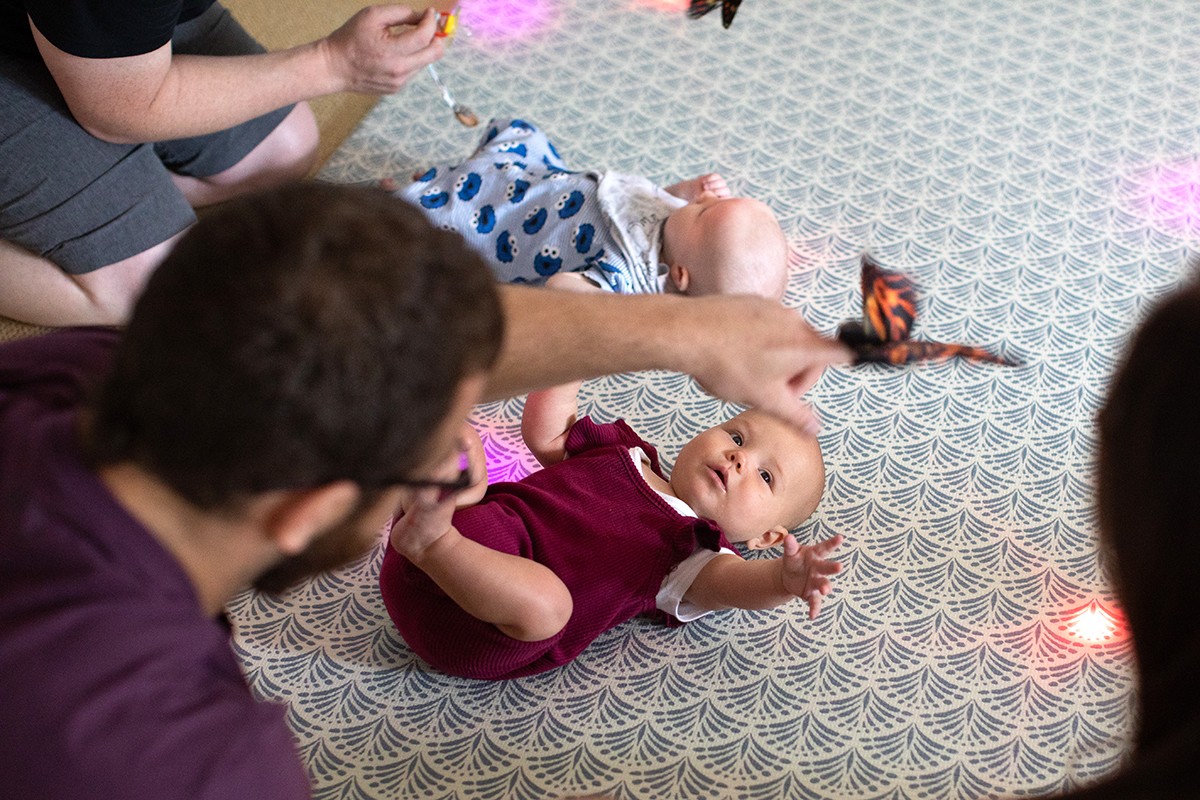
If you lay on your back (go on) and reach your arms and legs outwards and upwards, then back into your body, you can feel your core muscles working hard. Inward movements flex or shorten the muscles and outward movements extend or lengthen the muscles. Lots of back time with interesting objects to reach hung over baby will literally entice them into hundreds of little tummy crunches and hip flexing moves every day. This is the exercise bub needs to enjoy tummy time.
THE PROGRESSION FROM TUMMY TIME TO CRAWLING
Rolling
Before baby can prop and reach in front of them, placing toys beside them will encourage the anchoring rolling that makes them strong enough to prop for long periods of tummy time and roll over to change position. It gently teaches us how to use gravity and the weight of our body to give momentum to the movement. The more time baby spends rolling, the stronger this automatic system will become.
Sitting and Commando Crawling
Your babys’ nervous system and strength starts at the top of the head and slowly goes down the body and then out to the extremities of the limbs. After rolling, your baby will start to build the core strength to sit up first supported then unsupported. BEFORE your baby can crawl on all fours, the arms need to be strong enough to not only bear babys’ weight but also to hold against the forward pressure of the legs pushing forward. So again, we see the incredible design in the order of development with commando crawling as an important movement to strengthen the arms. Commando crawling is crawling with the tummy still on the floor. Often, we feel like this isn’t “real” crawling. Commando crawling depends mostly on the arms and core muscles to move.
You might notice your baby goes backwards BEFORE they go forward. That is because the arms are at first stronger than the legs. This can be super frustrating as they move away from what they want.

Crawling
Eventually their struggle will engage their legs and the feet find a grip. This is when you see baby rocking forward and backwards for a while. It’s amazing that this action is designed to strengthen the leg muscles. This push and pull like a gym exercise, is building up the strength and responsiveness of the legs, until finally they are stronger than the arms and push forward. And baby face plants. And then learns to reach forward to stop the face planting and finds…they are crawling.
This building block style of development continues throughout life. Crawling collects all the data from the senses (eyes, ears, hands and skin, mouth, and nose) that tell them how gravity works and where they are in space. It is the exercise baby needs to develop shoulder strength and achieve the cross lateral movement that builds connections in the brain for complex thought. These are both essential for all school age and adult movement and thought.
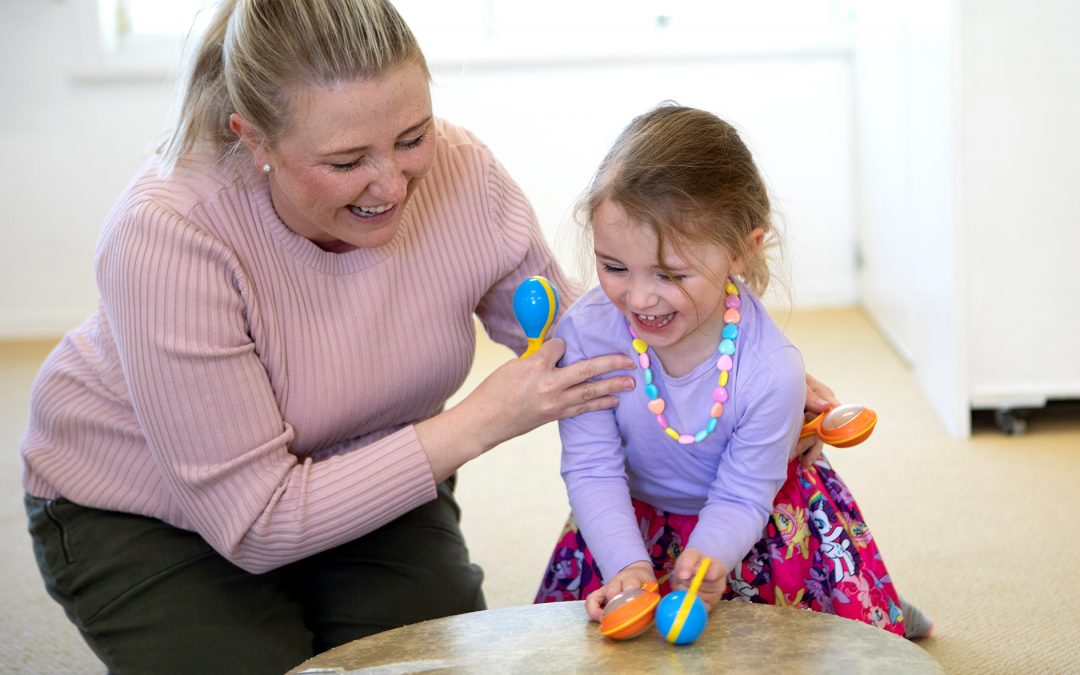
by Joanne Wallace | Feb 15, 2022 | Child Development 0-5yrs
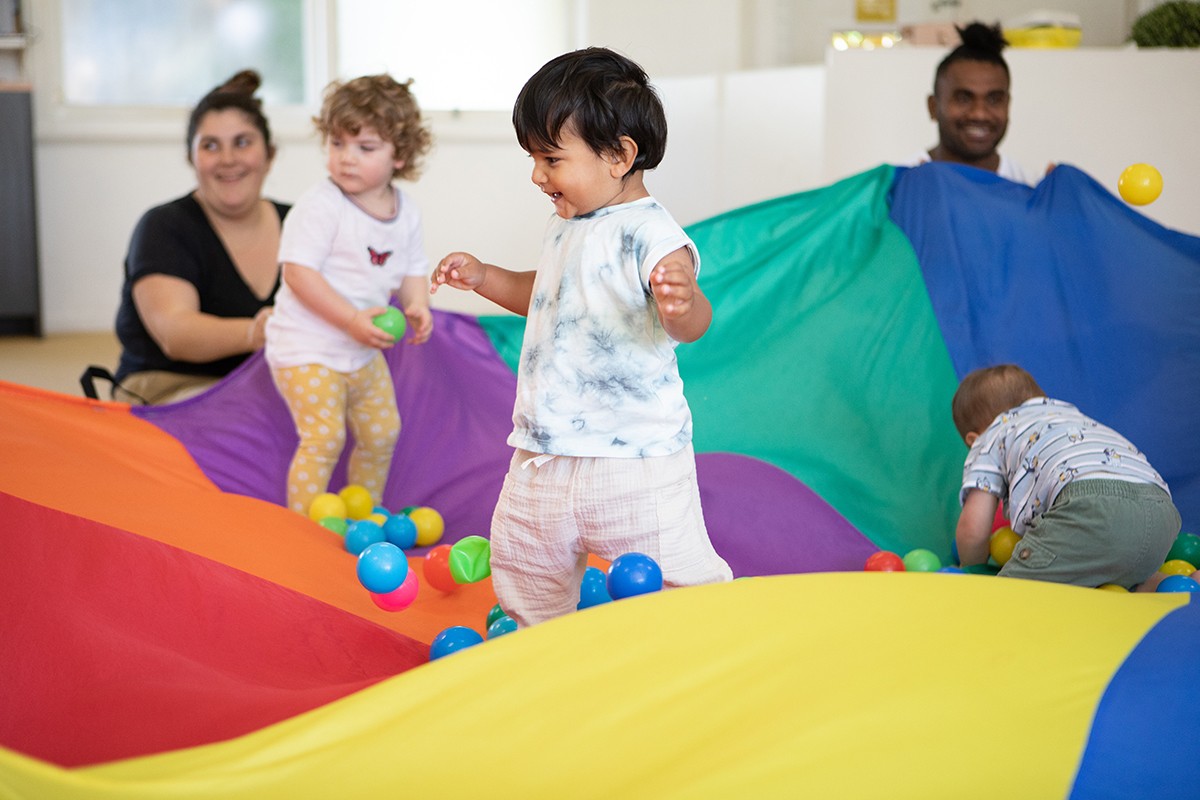
First of all, let’s be real, of course they do…it is literally your toddlers’ job to move. It is also their job to become independent from you. This means the overall job description for a toddler is “run away from mum”
Your toddlers’ brain is growing at a faster rate than at any other time in their life. All brain development happens through movement, so they are literally building their brains as they move. It makes sense that all children would be at their wriggliest between 1 and 3. One of your primary goals at this age is to create safe spaces to meet their very real need to move. Parks and wide-open spaces with grass are your best friends when you parent a toddler. Time for free safe running should be made every day.
Wear them out! With this need met they will be less likely to run at the super-market and if you tire them out, they might just sleep better. But your other primary goal is to keep your toddler safe.
That is why the challenging task of introducing self-regulation alongside independence is essential. Independence without self-regulation causes unpredictable, emotional and eccentric behaviour.
Why is toddler behaviour so tricky to regulate?
Although toddlers can move…and move fast… they have absolutely no ability to judge distance or speed. In fact, they have very little peripheral vision. They can neither see the child coming in the opposite direction OR respond in time to avoid colliding. They can’t yet imagine how someone else feels. They are completely surprised by someone being hurt by their actions and feel no responsibility for it. They also have little ability to motor plan. They don’t think ahead or know what might happen if they do something. Throwing a ball at mummies face isn’t mean, it’s just an action without motor planning.
Toddlers have little impulse control. They will do whatever comes to mind in the moment. They can’t stop themselves from doing what they want to do or make themselves do something they don’t want to do. This is still your job and the adult. The frontal lobe, which is responsible for all this self-regulation, is not yet working to capacity (and won’t develop completely until adulthood). A toddler cannot hear what you are saying when their attention is on something else. You may need to touch, turn them to you, or pick them up before they can hear you. They “hear” actions and tone, not words. Especially if your words don’t match your actions. A very interesting concept that has allowed many parents to change their approach to toddler behaviour management.
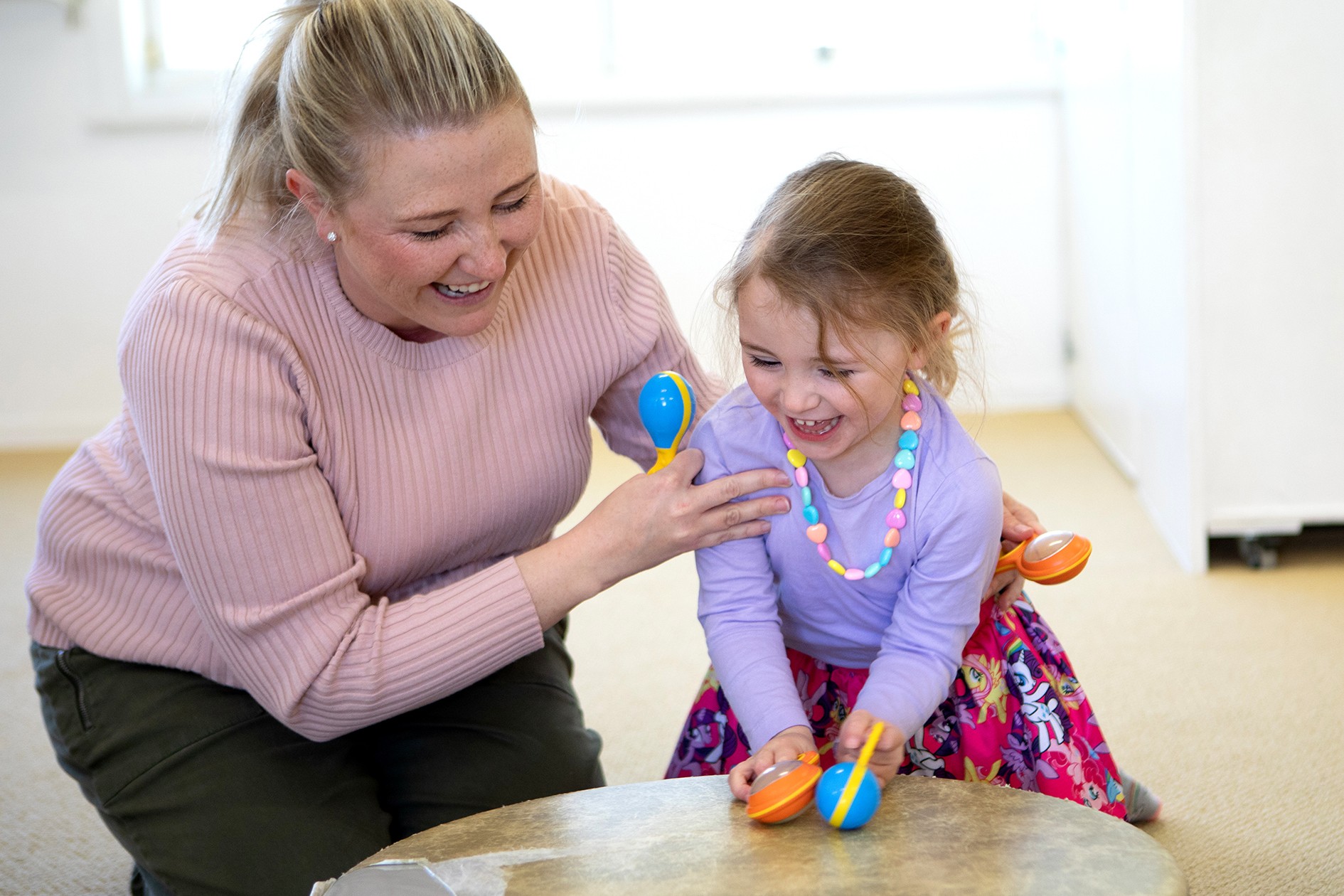
Our Hive classrooms are a unique space. How many other places do you go where there are 14 toddlers and 14 adults in the same place? We see so many beautiful little personalities in all sorts of emotional states. Foremost, how we interact at Hive is really about nurturing children as individuals, whilst guiding them through a social setting in safe environment. Our classes provide a toddler with structure and we introduce purposeful activities to move in each class, usually with their adult guiding them. When introducing these activities, you will hear your teacher give guidelines to help you, such as “stay with your child” and “move in the same direction” It is important to follow these guidelines for everyone’s safety.
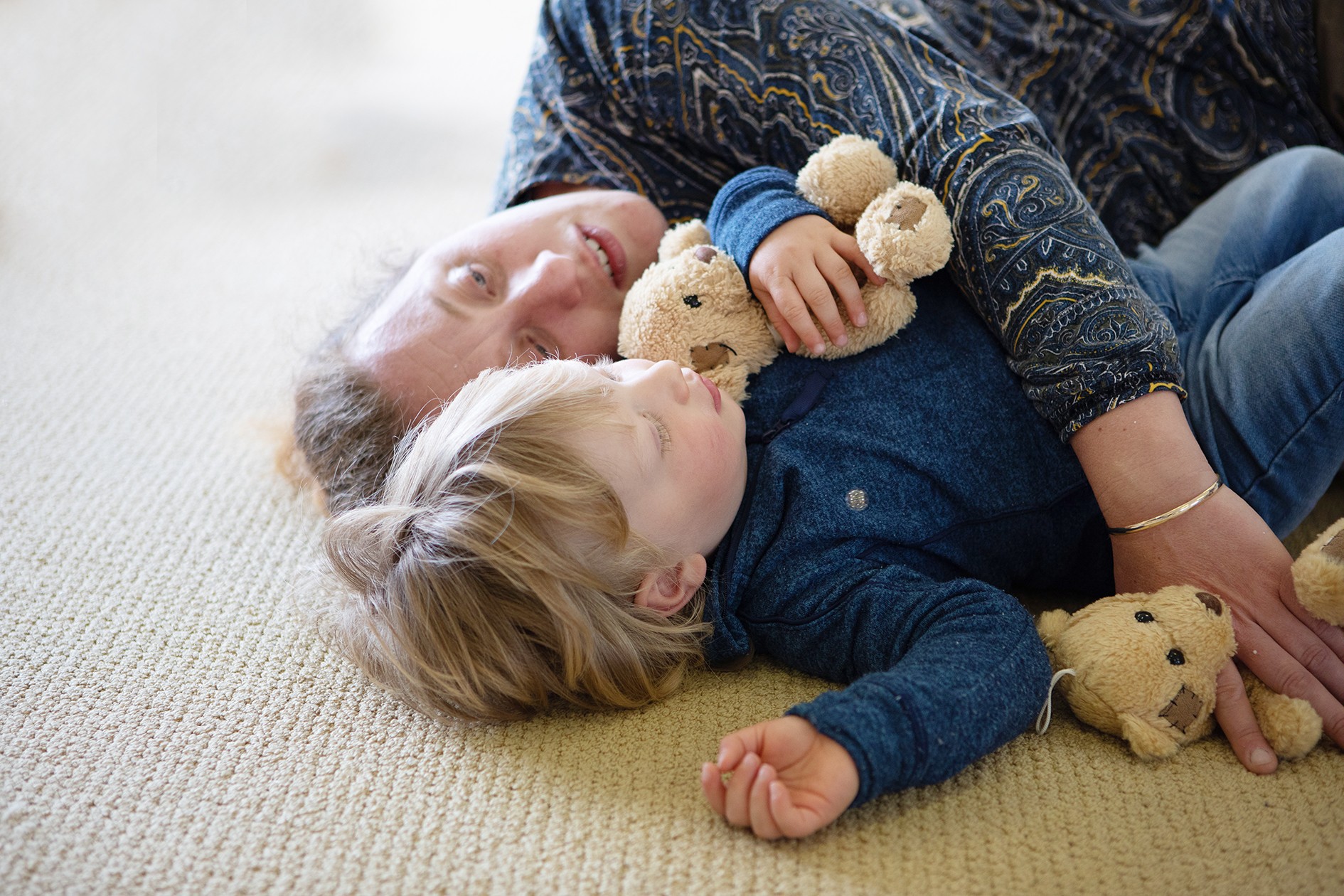
Our teachers and reception staff are all parents too. We are never surprised or alarmed when your toddler acts like a toddler. We are here to support and you guide your child in the classroom to be safe while having as much fun as possible. Developing self-regulation is so important as they will need to be able to utilise these skills when they start school as independent learners in the coming years. Start your journey today!
We cant wait to see you in class.
Mel

by Joanne Wallace | Feb 3, 2022 | Child Development 0-5yrs
I want to see the “after” photos of those perfect “messy play” posts on social media. Perfectly colour matched blobs of paint or slime poised under a grinning gummy baby smile, invite us to venture into the world of messy play at home. So many parents I speak to laugh about the 4 minutes of peace they got before the hour of mess they had to clean up.
Messy play without a purpose is just plain messy!

The first secret to successful messy play is to know developmentally how your baby is likely to play, and why. For example, 1-year-olds don’t have the hand control to play with play dough rollers and cutters but love poking objects into play dough.
Your 2-year-old will begin to squeeze and make shapes. They can make basic “animals” by adding paddle pop sticks or eyes. The second secret of messy play is to join them in the play. When we stay nearby and add play ideas when attention fades, they will stay at the activity longer. When presented with a similar activity next time they will try out all your ideas and play alone longer. For example, if you let them see you hide interesting objects inside the play dough, or poke objects in a line, your 1-year-old will search for the object or add to your “fence.” If you roll out the play dough flat with their hands on the roller, then model making prints or cutting shapes, roll snakes for them, your 2-year-old will attempt this on their own and be able to do this independently at 3.

You provide the purpose. The purpose of play is to learn new skills.
If left alone, without your guidance, they will simply break up and drop the play dough on the floor. And come back to you, while you clean up the mess. Because messy play without a purpose is just a mess.
The third secret to successful messy play is the right equipment. Water play in an oven tray on the floor only works in Instagram photos. We all know the first thing bub does is lean on the edge and flip it all over the kitchen floor. And how many of us have sticky taped zip lock lunch bags to the floor full of baby oil and food colouring only to have a hole in it in minutes? Because messy play without suitable equipment is just a mess.We discovered reusable silicone zip lock bags and purpose made sensory tables. We love to include ideas you can manage at home as well as those you would probably never attempt without a professional cleaner on the payroll.
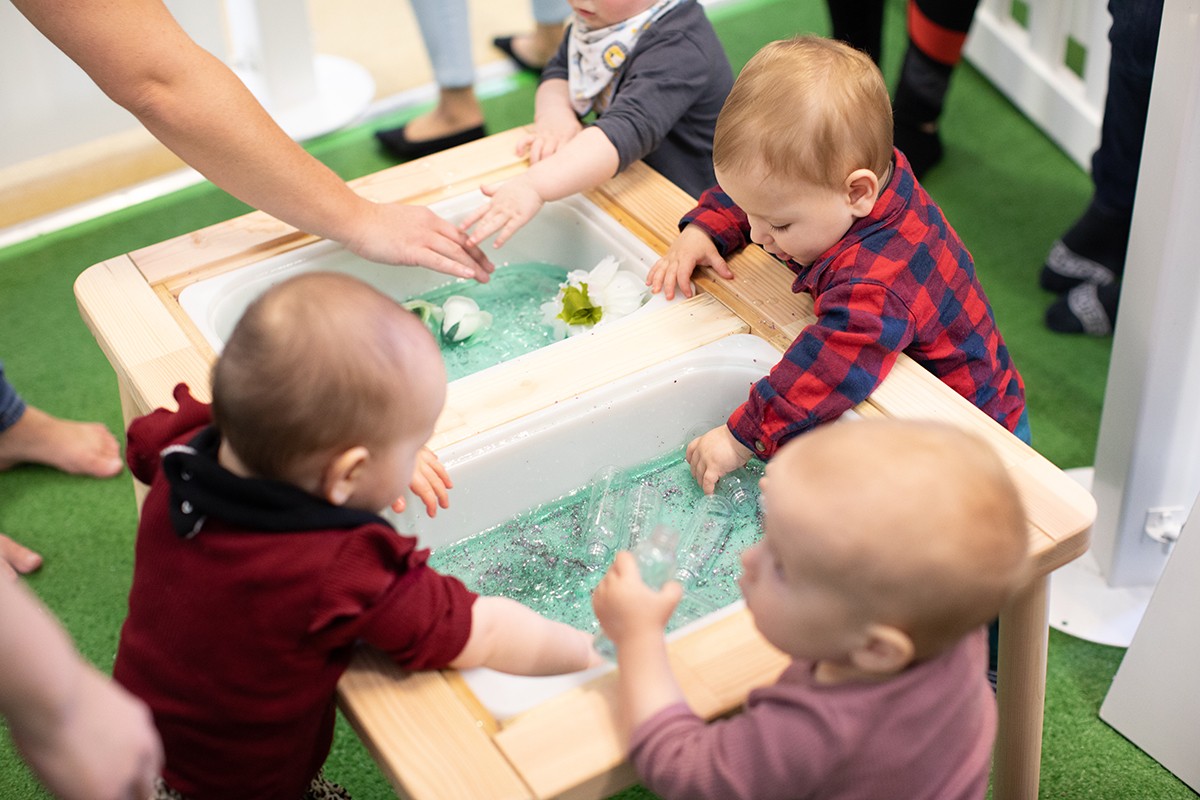
Before you make the mess at home, you can see the purpose with us. We carefully think through how each age group will interact. In fact, we change certain elements of set up for each class.
Come Bee Messy with us.
Mel xx
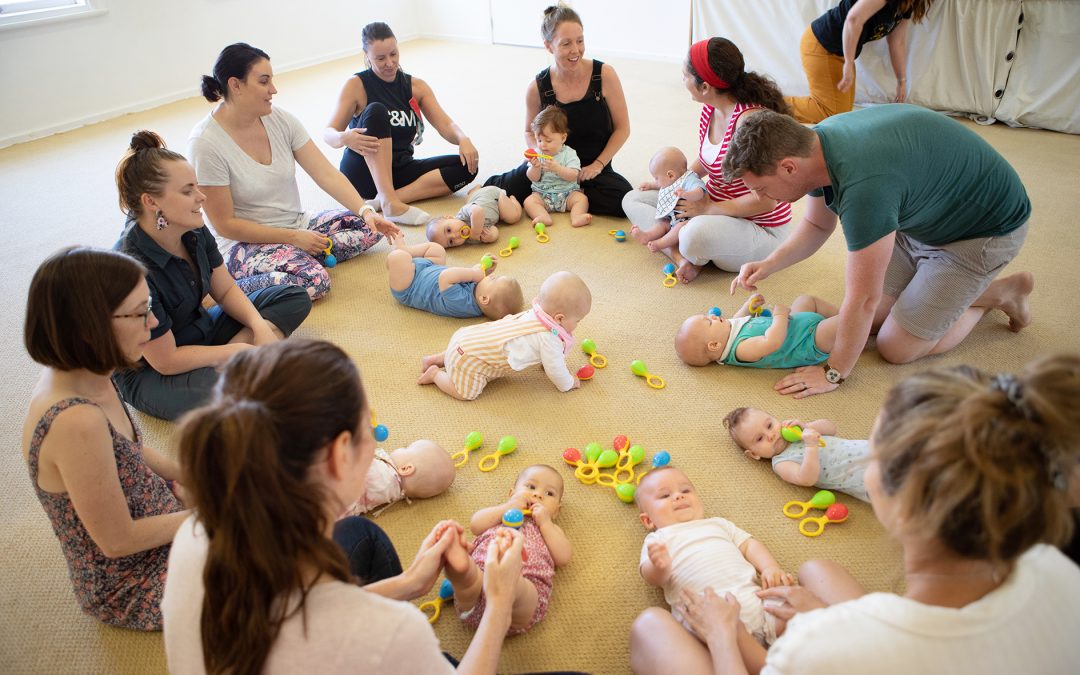
by Joanne Wallace | Jan 27, 2022 | Child Development 0-5yrs
BEE SOCIABLE – HIVE’S PHILOSOPHY OF BABY SOCIALISATION THROUGH THE FIRST YEAR
Parents are under pressure to “socialise” their baby almost as soon as they are born. By the end of babys’ first year, experiences have wired your babys’ brain to expect that the world is either safe and kind or unsafe and unpredictable. This means they will approach the world with either confidence and trust or caution and mistrust.
You are the God of their universe, creating the environment and providing the very first human bond. It’s exciting to know you have the power to deeply affect their life long mental health and happiness.
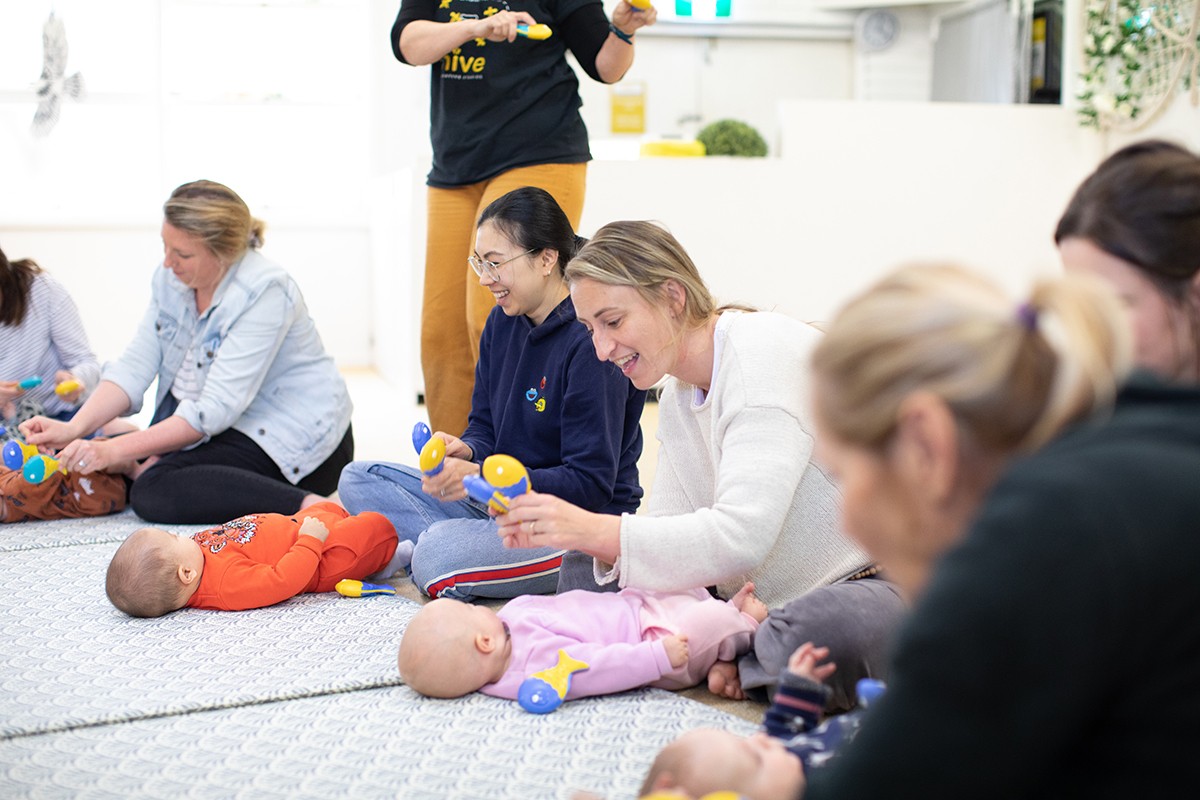
Under 3 months
The first thing baby needs to know is “Are you there?” and “will you come when I need you?” During this time, come every time they seem to need you. Comfort is a need. You cannot “spoil” a baby under 3 months.
Suitable socialisation at this age is mostly you, your partner and/or the stable, close family members who support you as a parent. Social Outings include activities with other parents and are mostly for you. You are in control of gentle, sensory activities and can withdraw when baby has had enough. You can meet babies’ physical needs wherever you are.
Baby carriers, muslin style blankets, holding baby tight to your chest and covered prams help you shield baby when you know they need it.
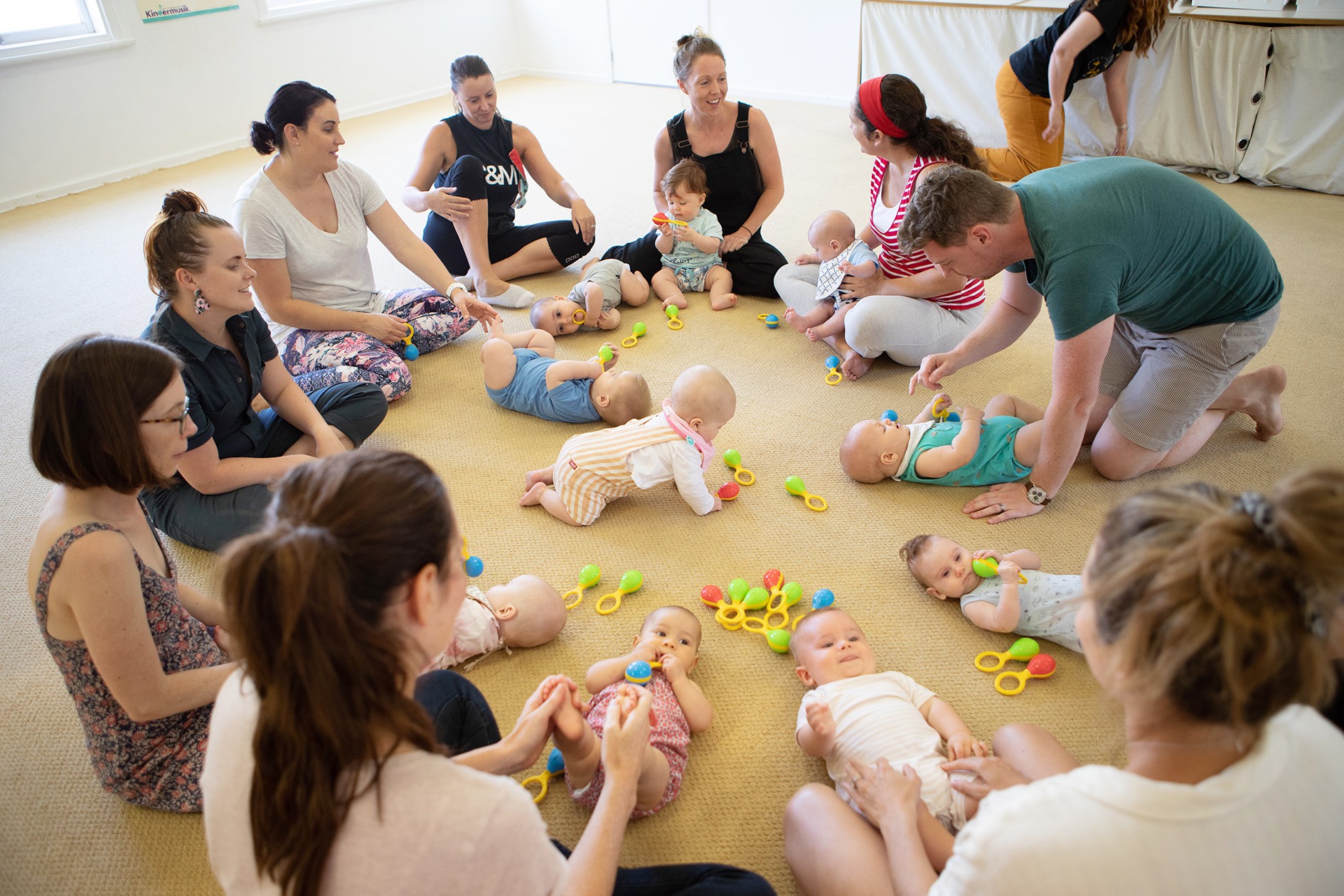
3 to 6 months
Babies’ next question is “What can I expect to happen?” Routine is King. But the clock is not. Do things in time, not on time. The sequence of what happens, what happens first, next and after will be as familiar as you can make it.
Eat. Play. Sleep. This order is best to keep feeding out of the sleep routine.
A song, a particular spoon or book, the same rhyme or prayer, all give your baby a trigger for each of these activities that help them predict and settle into a routine. With you close by, being left alone on the floor increases independence.
It’s good for you and baby for baby to have time alone with some of those stable, close family members. Social Outings are still for you but include seeing other babies, and children. Join in noisier, happy activities such as music and dancing. Take baby to exercise, either on you or in the pram.
You are still babys world. Baby needs you (or their carer) in close call to feel safe.

6 to 12 months
The questions that need to be answered for baby in these months are “what happens when I do this?” and “Are you still there when I can’t see you?” Consistency is key. Respond deliberately to increase or decrease behaviours. Every time. Whatever gets the big reaction will be the behaviour that is repeated. There is no “good” or “bad” just “exciting” and “boring”
Distraction is King. Instead of getting grumpy or saying “no” (so interesting) repeatedly removing their hand (what a lovely game) simply silently remove baby or the object and move them on to something else. (Boring…oh something new)
As their playmate, we constantly add to their ideas of how to play with objects now, so that, as a toddler, they can entertain themselves longer.
Social Outings are terribly exciting with opportunities to see how other people react to baby. Activities are more for baby and you. They include safe spaces and objects to experiment with where baby is free to explore. Activities where everyone does the same thing at the same time such as making music or lap bounces become enchanting. They love being flung in the air or strapped on a bike, collecting data for when they eventually move for themselves.
Separation anxiety from 8 months is common, due to the growing ability to understand you still exist even when they can’t see you. Mood swings stem from the possibility that “mummy is gone forever!” or “mummy is off having fun without me!” Deliberate activities that cement object permanence (mummy will always come back) will help. Play peekaboo, in boxes and tunnels, move around objects.
You are their anchor. Baby needs to know you are there, even when you are not.
So, in the end…
Under 12 months, socialisation is best with you or a trusted, attached carer, right alongside, to give your child a trusting, confident head start.
Hive is the perfect place to begin their social journey. Alongside new, lifetime friends, each week you will gather ideas and songs to meet your child in play. We provide the security of knowing activities are clean, tailored to babys’ age and fun and exciting for both of you.
Come Bee sociable.





















